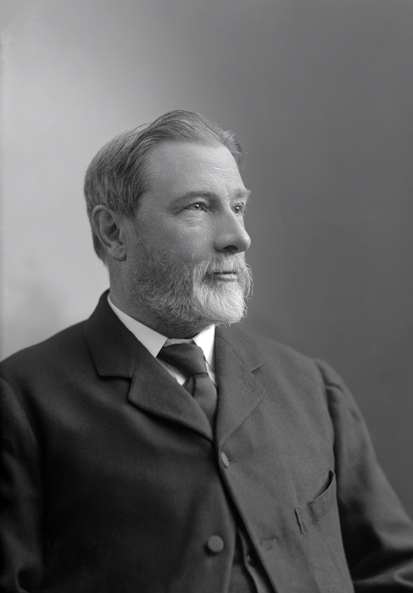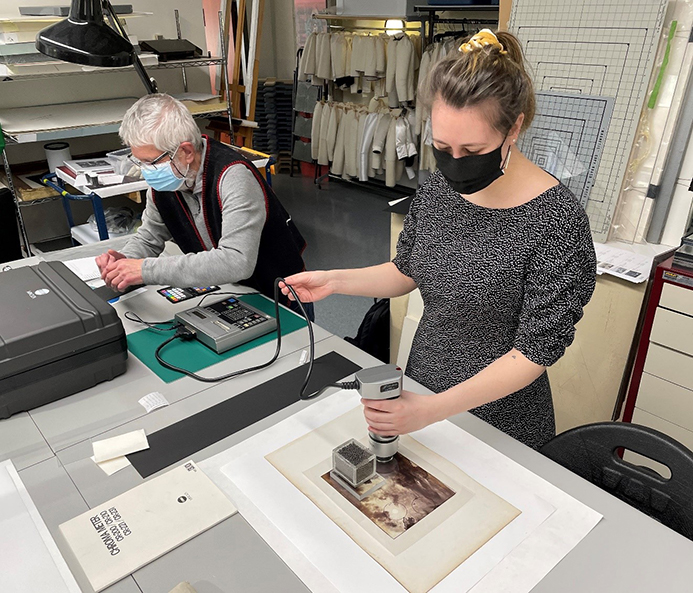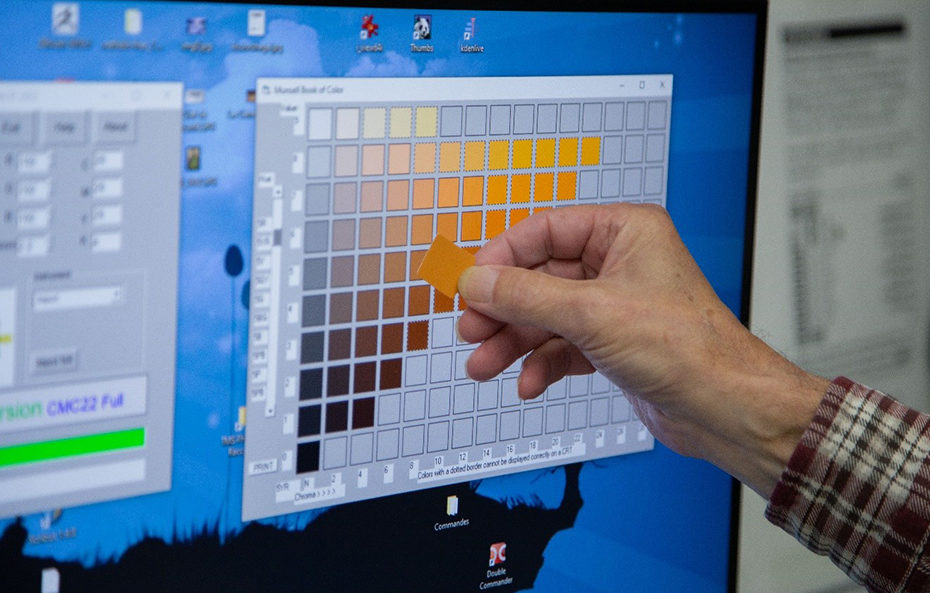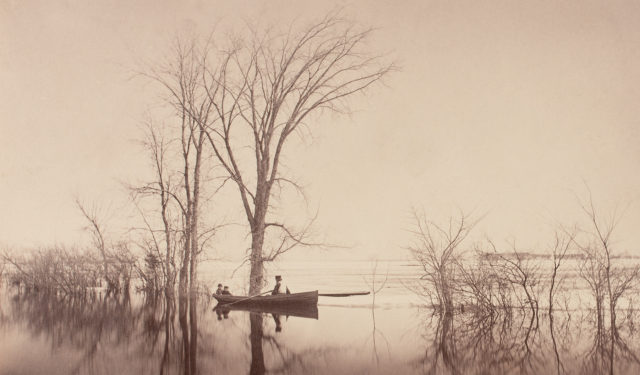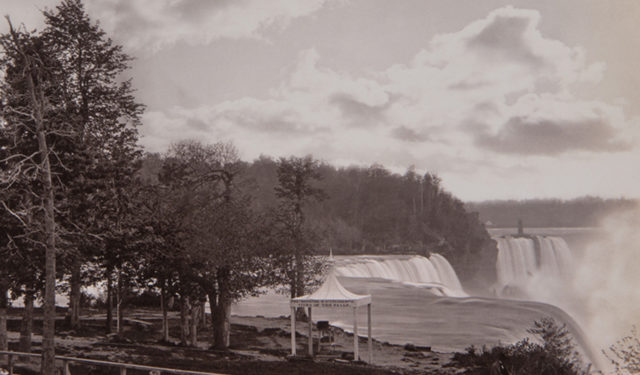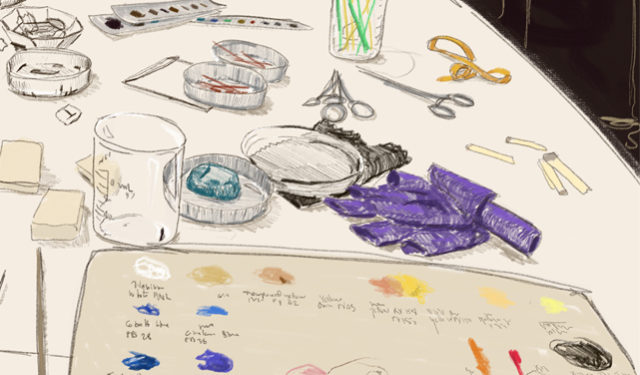Colorimetry and preventive conservation
Discover why the Museum decided to carry out colorimetric tests on twenty or so photographic prints in exhibition.
February 28, 2023
Alexander Henderson (1831-1913) is considered one of Canada’s leading landscape photographers. The exhibition Alexander Henderson – Art and Nature, which is on at the Museum until April 16, 2023, includes a number of photographic prints on salted paper.
A salted paper print is a positive image created from a negative. The paper support is first covered in a solution of silver nitrate and sodium chloride (salt)—creating silver chloride—which makes it sensitive to light. The negative is then pressed directly onto the paper surface and the two are exposed to light, usually the sun, which then gradually produces the image. The resulting print has warm tones and a matte finish.
Colours are the deeds and suffering of light.
Theory of Colours, Goethe
However, salted paper prints are susceptible to discolouration from light. When light penetrates materials of different densities, it is refracted or can fragment. Light damage is cumulative and irreversible, and affected photographs never regain their original colours.
Total light exposure is calculated as the product of time (hours) and light level (lux). The Alexander Henderson prints will be on display for 10 months, which means they will be exposed for 2,440 hours under a light level of 50 lux. It is therefore important to record the cumulative time that Henderson’s prints are exposed to UV and visible light.
To better preserve these works during the exhibition, the Museum’s Conservation team decided to carry out colorimetric tests on twenty or so photographic prints to measure any possible changes in colour. The prints chosen were selected for their rarity, while also being a representative sampling of Henderson’s work.
COLORIMETRY
Colorimetry is a scientific analysis that relates physical measurements of light to colour perception. The precision of colorimetric devices enables us to determine whether there has been any change between two colorimetric readings of a work. Changes can be very subtle: the eye is not always able to discern them or identify the extent of the change. However, if we observe changes in the data generated by the colorimeter, this indicates that light has modified the object’s colorimetric values.
WHAT CAN COLOUR TELL US?
A colorimetric test generates a code from a standardized colour system, usually CIELAB. In this system, a colour is measured according to its lightness, its position on the red-green axis, and its position on the yellow-blue axis. There are other colour systems and, at the Museum, we use the Munsell system, which defines colours according to three attributes: hue (colour), value (lightness or darkness) and chroma (saturation or brilliance).
Colorimetric analyses are one of the tools we use to reduce light damage. We have developed a multi-phase process, which involves taking readings on the selected prints before, during and after display. By interpreting and studying the information collected about the objects, we can determine whether visible changes are taking place and, if so, we can quantify these changes very precisely and have a coded record of the object’s initial state.
Every time a work on paper, fabric or any other sensitive material is displayed, there will be some deterioration: it is unavoidable! However, thanks to preventive conservation practices that use strategies to limit the risk and sources of damage, the Museum is prepared to take a ‘measured’ risk in order to share its collections with the public.

